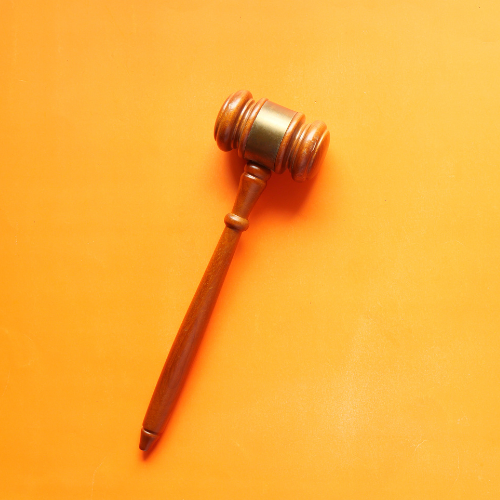NEW FEATURES FOR 2024
- New EPRs on 1st of January 2024:
EPR catering for waste from the café-hotel-restaurant (CHR) sector / EPR chewing gum (non-biodegradable synthetics) / EPR disposable sanitary textiles (diapers, wipes, tissues, etc.).
- Consumer information ( 13 AGEC - Decree April 29, 2022) :
From 2024 onwards, the thresholds will change: producers with annual sales > €20 million and placing 10,000 units of product on the market must provide consumers with dematerialized information, visible or accessible at the time of purchase of packaging or graphic paper, on: the incorporation of recycled material, recyclability, compostability, reusability, hazardous substances, premiums and penalties .
- Reuse (Decree of April 8, 2022)
The thresholds for re-use obligations have also been updated, with producers declaring annual sales > €50 million and placing more than 10,000 units of product on the market required to make available 6% of re-used packaging (household, industrial and commercial/primary, secondary and tertiary packaging), up from 5% in 2023. Packaging must also be recyclable (art. 9 AGEC).
- Reduction :
From July 3, 2024,
- Producers must market single-use plastic beverage containers with a cap or lid attached to the body of the container . Glass or metal beverage containers with plastic caps and single-use plastic beverage containers containing foodstuffs for medical purposes (liquid) are exempt.
- As of 12/31/23 (Decree no. 2023-478 of June 20, 2023), the deadline for disposing of stocks of fruit and vegetables weighing less than 1.5 kg with packaging made partly of plastic has come to an end. See here the list of 29 exempted fruits and vegetables.
UPDATE ON THE EUROPEAN PACKAGING AND PACKAGING WASTE REGULATION (PPWR)
In bold are the elements of the last Council vote (without provisional compromise)
The draft regulation was proposed by the Commission on November 30, 2022, revising Directive 94/62/EC on packaging and packaging waste. The text aims to clarify and harmonize packaging rules throughout the European Union.
The European Parliament and the Council of the European Union voted on the text on November 22 and December 18, 2023 respectively.
The trialogue between the Commission, Parliament and Council began on January 10, 2024, and on March 4, 2024, the institutions reached a compromise on the proposed Regulation. This provisional political agreement still has to be submitted to the permanent representatives of the Member States within the Council and to the Parliament's Environment Committee, before its final adoption scheduled for April, for application from eighteen months after its date of entry into force.
The obligations must be interpreted with caution, since negotiations between the 3 European institutions are still underway, and the text is likely to evolve further before it is adopted.
What's the difference between a Regulation and a Directive? What are the consequences?
The Directive is addressed to States, which are bound by the result to be achieved, but remain free to choose the form and means of achieving it. It is not directly applicable within the Member States, which requires a national transposition act.
The Regulation is binding in its entirety, has a general scope and is directly applicable in all Member States without national transposition measures.
As a result, Member States have less room for maneuver when it comes to applying European law, with the Commission intervening with delegated and implementing acts to lay down implementing procedures.
What are the key points of the Regulation currently being adopted?
Recycling/recyclability
The following framed measures were the subject of a provisional compromise between the institutions in the trialogue:
The institutions have agreed that all packaging must be recyclable by 2030, on the basis of recyclability criteria common to the whole of the European Union, applicable by packaging category according to performance classes per unit weight. These criteria will be defined by the European institutions.
From 2030, performance classes A to C will be considered recyclable (recyclability > 70%). From 2038, only classes A and B will be considered recyclable (recyclability > 80%).
- Exemptions have been introduced for the following materials: cork, light wood, rubber, ceramics, textiles, porcelain and wax.
- Recycled materials imported into the EU market from third countries must meet sustainability criteria comparable to European standards.
Criteria will be established to determine whether packaging is recyclable:
- designed for recycling (applicable from January1, 2030)
- effective and efficient separate collection
- sorted into defined waste streams without affecting the recyclability of other waste streams
- recycled in such a way that the resulting secondary raw materials are of sufficient quality to replace primary raw materials
- recycled on a large scale = a recycling rate of at least 50% (applicable from January1, 2035)
Reuse and reduction
- The packaging reduction targets set out in the draft Regulation have been provisionally agreed between the institutions: - 15% (baseline: 2018) per country and per capita
- 5% in 2030
- 10% in 2035
- 15% in 2040
In particular, by reducing the amount of plastic packaging waste.
- The compromise provides for reuse targets, binding for 2030 and indicative for 2040. However, the institutions have not yet reached consensus on all the reuse targets. To date, the institutions agree on the following elements:
- Alcoholic and non-alcoholic beverages: at least 10% by 2030 (excluding wine, milk and other highly perishable beverages).
- Transport and sales packaging, with the exception of packaging for large equipment and/or dangerous goods, and flexible packaging in direct contact with foodstuffs: 40% by 2023 for all packaging and materials. The target for 2040 is 70%.
- Reuse targets will also be set for grouped packaging.
- Takeaway companies will have to allow customers to bring their own containers. By 2030, 10% of their products must be offered in reusable packaging formats.
Exemptions :
- Cardboard packaging is exempt.
- Introduction of a general five-year renewable derogation in the following cases:
- The State exceeds the recycling targets set for 2025 (in the Waste Framework Directive) by 5 percentage points, and is set to exceed the 2030 recycling targets by 5 percentage points.
- The French government is on track to meet its waste prevention targets.
- Economic operators adopt a waste prevention and recycling business plan to achieve the relevant objectives set out in the Regulation.
- Micro-businesses exempt from re-use targets
Collection/consignment
The institutions have agreed on the following measures:
- No later than January1, 2029, States shall take the necessary measures to ensure the separate collection of at least 90% per year by weight of plastic beverage bottles and single-use metal beverage containers with a capacity of up to 3 liters placed on the market for the1st time.
- States will have to set up deposit systems for these packaging formats.
Exemptions:
- Deposit-refund systems existing in states before the Regulation came into force and which meet the 90% target by 2029.
- States to achieve a separate collection rate of over 80% by 2026, with the submission of an implementation plan and a strategy to reach the 90% separate collection target.
Eco-design
Institutions agree to set minimum targets for recycled content in plastic packaging:
- Targets for the incorporation of recycled plastic for 3 types of packaging:
Sensitive" contact (food, pharmaceutical) :
- 30% PET and 10% non-PET by 2030
- 50% PET and 25% non-PET in 2040
Single-use beverage bottles :
-30% by 2030
- 65% by 2040
Other plastic packaging :
- 35% recycled content for plastic packaging by 2030
- 65% by 2040
Exceptions have been introduced as part of the provisional agreement, concerning :
- compostable plastic packaging
- packaging whose plastic content represents less than 5% of the total weight is exempt from the targets for incorporating recycled plastic.
The Commission will draw up an assessment and report on the achievement of the 2030 targets, enabling the feasibility of the 2040 targets to be assessed.
- Restriction on the use of "eternal chemicals" (perfluorinated and polyfluorinated alkyl substances or PFAS) in packaging in contact with foodstuffs.
- Reduction in the size of grouped, transport and e-commerce packaging to limit empty space to 50% of the volume of the package, with the exception of packaging models protected by States before the Regulation came into force.
- A ban on certain formats of clearly unnecessary disposable plastic packaging (excluding paper and cardboard) from January1, 2030:
- Single-use plastic packaging for unprocessed fresh fruit and vegetables;
- Food and beverage packaging in cafés and restaurants, and individual portions of condiments and sauces (except paper sugar pods);
- Miniature packaging for cosmetics and toiletries in the hospitality sector (body lotion, shampoo);
- Very light plastic bags (less than 15 microns)
- Stretch film for airport luggage.
- The following measures stem from the Council vote (December 2023) and will soon be the subject of a formal agreement between the institutions in the trialogue:
- Rewards/penalties: eco-modulation of EPR fees according to the percentage of recycled content used in packaging by 2027.
- Tea bags and adhesive labels attached to fruit and vegetables must be compostable : States have the option of requiring other packaging (coffee pods, lightweight plastic bags, etc.) to be compostable under specific conditions.
Signage and consumer information
This information will have to be given in several languages, with a single medium providing both product and packaging information.
- Harmonization of sorting information :
- Each package will bear an identical label/pictogram/symbol throughout the European Union indicating the material used. Waste collection containers will bear the same labels. The label may be accompanied by a QR code or other type of digital data medium placed on the packaging containing information on the destination of each separate component of the packaging.
Pending the entry into force of the Regulation, the Triman info-sort is still to be applied to all household packaging in France.
- Harmonization of reuse signage :
- Harmonization of packaging labelling for reuse (pictograms)
- Add a QR code with information on reuse (e.g. availability of a reuse system and collection points).
- Other information to be provided on the packaging :
- Communication of the proportion of recycled content: "RecyScore".
- Specify when packaging is compostable (to be disposed of as bio-waste).
- Communicate the exact and measurable share of biobased plastic and avoid generic claims on plastic products such as "bioplastics" and "biobased".
Extended producer responsibility :
The Commission will adopt implementing acts defining the producer registration format. The registration format will have to be interoperable, based on open standards and data readable in all member states (following the Council vote).
Note that:
- All suppliers hosted on online platforms will be bound by the same EPR obligations as producers.
- The achievements of the AGEC Act will not be jeopardized, since it incorporates several existing obligations in France (AGEC Act and Climate and Resilience Act), such as labelling, consumer information, recyclability criteria, waste reduction targets, incorporation of recycled plastic and, in particular, the obligation to register producers subject to EPR.
- What's more, the institutions have agreed to allow Member States to keep their national targets, which will be more ambitious than those set in the European Regulation!
For further information, please visit the various texts:
Commission proposal: EUR-Lex - 52022PC0677 - EN - EUR-Lex (europa.eu)
Parliament plenary vote: Texts adopted - Packaging and packaging waste - Wednesday, November 22, 2023 (europa.eu)
Council vote: pdf (europa.eu)
Provisional agreement of March 4, 2024: Agreement on new rules for more sustainable packaging in the EU | News | European Parliament (europa.eu) and Packaging: Council and Parliament reach agreement to make packaging more sustainable and reduce packaging waste in the EU - Consilium (europa.eu)


